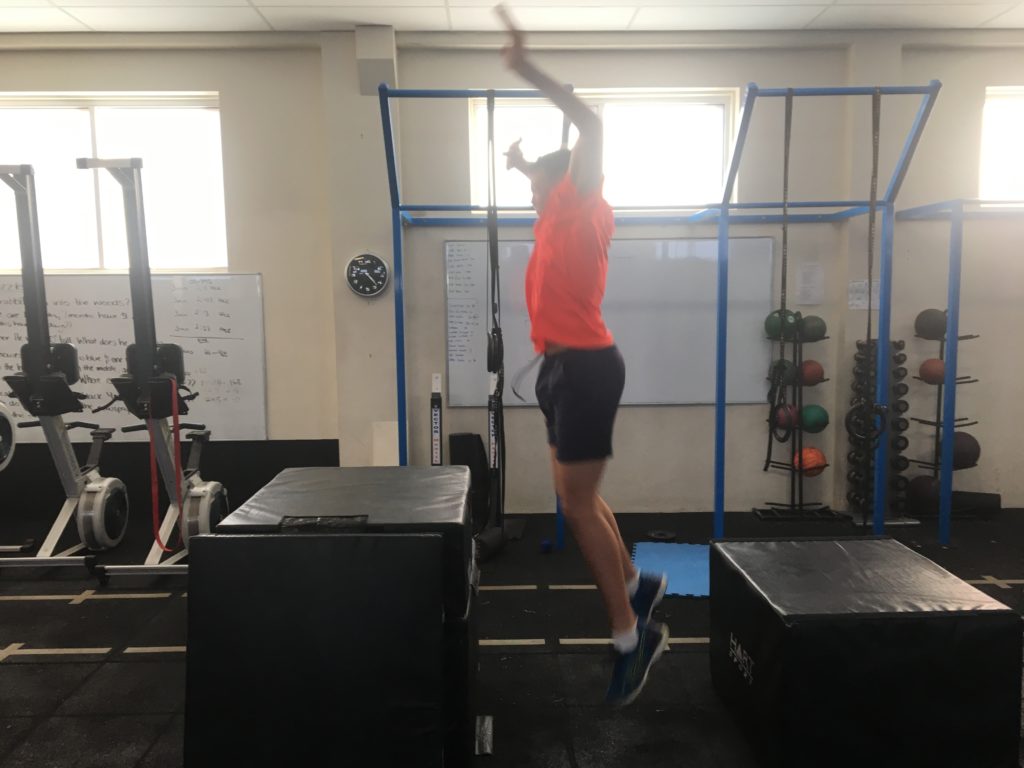As an athlete, strength is mostly very useful in nearly all sports. Strength can be put into a number of contexts, however if we look at a simple explanation of how we look at strength for an athlete.
If we test an athlete and their maximal strength is X. You expect that over a course of the athlete’s event, the maximal strength will be endured to a lesser point, which is part of a fatigue index; i.e. using a sport that is easy to see, you could look at Cricket and fast bowling. If a fast bowler can bowl his maximal ball at 130km/hr but in his 6th over in a row he is only bowling with an average speed of 110km/hr, he has reduced his output by 20km/hr. You can argue that if this is done in non-game situation with no tactical issues present, that this bowler has now lost a major part of their effectiveness, being their speed.
If we increase this bowlers upper and lower body strength over the course of an off-season, then what we would hope firstly is that you may see an increase in maximal bowling speed, but you would really want to see the increase in overall average bowling speed as well.
So, what sort of intensity is required to increase 1RM strength?
Resistance training has a few different components:
- To grow muscle (hypertrophy) – more muscle generally means more force that can be produced.
- To increase neuromuscular coordination or response (Central Nervous System).
We work both ends of this type of workload in different ways:
So, increasing maximal strength, does not necessarily mean you will increase power. Power is a function of work performed in the time taken to do so. So, this is where if you are coaching athletes where their power produced is very relevant to their body mass, you need to be mindful first of increasing the CNS potential as much as physically possible first and NOT worrying about trying to GROW muscle, rather than make all the muscle the athlete owns first, do the job you want it to do. No point being massive, if you only use 70% of what you have, right?
So, CNS training, how does that work?
- Increasing core and trunk stability will help the CNS work or fire better, because you are increasing the areas of stability that need to operate well, to facilitate high force producing movements by the limbs.
- Focus on firstly establishing volitional control of every movement the athlete makes. Meaning, that you start with slow eccentric, pauses at bottom of repetitions and powerful push or pull or rotation movements, with the focus on HOW the movement is done first, rather than weight. Use higher repetitions in sets, OR more set volume to make the athlete repeat multiple times in a session the workload and patterns of movement you are looking for.
- Then, when you get both of these above points, then we start to work really hard on the work done over the time performed equation. “How fast can you move that bar?” You have to move the load with INTENT to cause massive force and power!
When we get this, and it LOOKS good, and maybe if you have some cool gadgets such as velocity measurers, you can measure actual speed or velocity each repetition to get an exact measure then you can start to creep up the load.
Studies that I have read over the years, really argue about what is the optimal power intensity (%1RM). I have really gotten it down to the fact it is completely individual for each athlete. Some athletes can move load fast all the way into the 90% range and only slow down right at the top of the strength/power continuum. Some athletes cannot do this, and need to be dropped back to even 55% but increased in reps, and the volume of work at lighter loads in particular really makes the difference for them.
So, remembering those key points that we talked about, Core stability; CONTROL of movement and INTENT to move the load quickly.
They are the keys to developing and increasing power in an athlete from a practical coaching point of view.
Hypertrophy (muscle growth) training, in my opinion should only come AFTER an athlete has demonstrated good progression in the three points above.
AND… assuming at all times that the mobility of the athlete has been checked and is suitable to perform movement. This is the obvious first thing to fix before adding strength to a dysfunctional movement, (That is a whole other article!).
If you would like to check out a great example of Power in an athlete here is Jarrod Spear, completing as part of his program a Peak Depth Jump of 90cm drop to 110cm Jump. This is someone who maximises EVERYTHING that he has, in terms of strength and puts it to power. This is CNS development at its best.
https://www.facebook.com/pg/vectorhealthCQ/videos/?ref=page_internal

